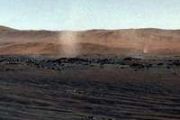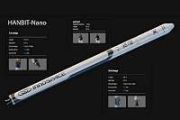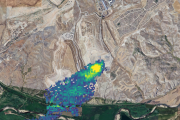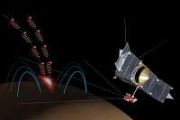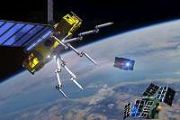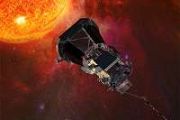
Copernical Team
Plato’s structural test campaign
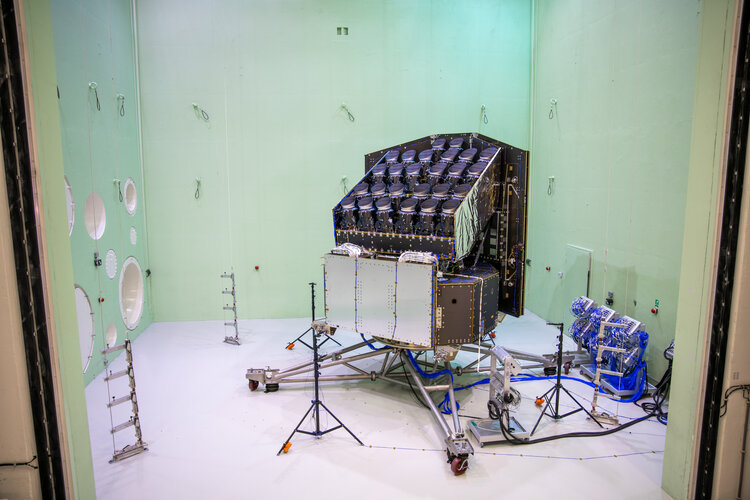
From May to August 2023 a structural model of ESA’s next exoplanet mission, Plato, is undergoing a test campaign at ESA’s ESTEC Test Centre, at Noordwijk in the Netherlands. Plato is planned to launch on an Ariane 6 in 2026. During lift-off Plato will have to withstand intense vibrations and immense blasts of noise. To make sure the satellite can survive the start of its journey to space, engineers test its structural integrity beforehand.
Plato in ESA's LEAF room
 Image:
Image:
This image shows ESA’s next exoplanet mission, Plato, in the Large European Acoustic Facility (LEAF). In this room, the noise of a rocket taking off is simulated. The large room measures 11 by 9 metres and is 16.4 metres high. One wall is equipped with multiple noise horns, that have a similar design as ordinary speakers. Nitrogen is shot through the horns and can produce noise up to 156 decibels. During tests, no one is allowed into the room that is surrounded by a 0.5-m-thick layer of concrete to keep the noise in. Plato passed its test with
ESA ground stations support Chandrayaan-3 Moon mission
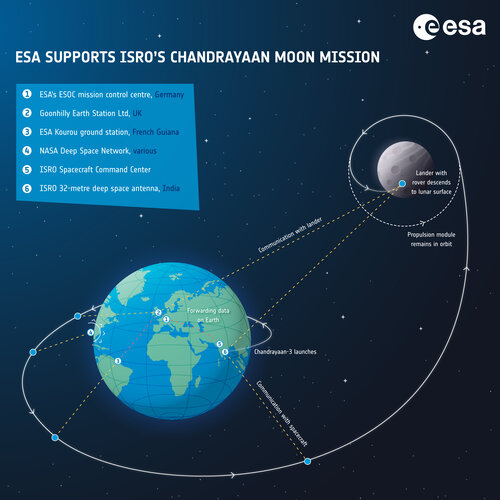
Euclid’s large halo around indefinitely small point
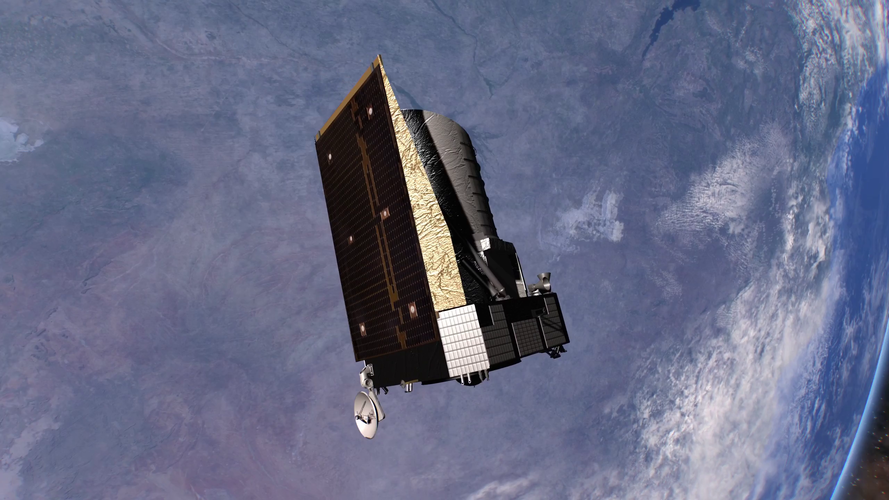
Space awaits you! More ESA vacancies now open for applications
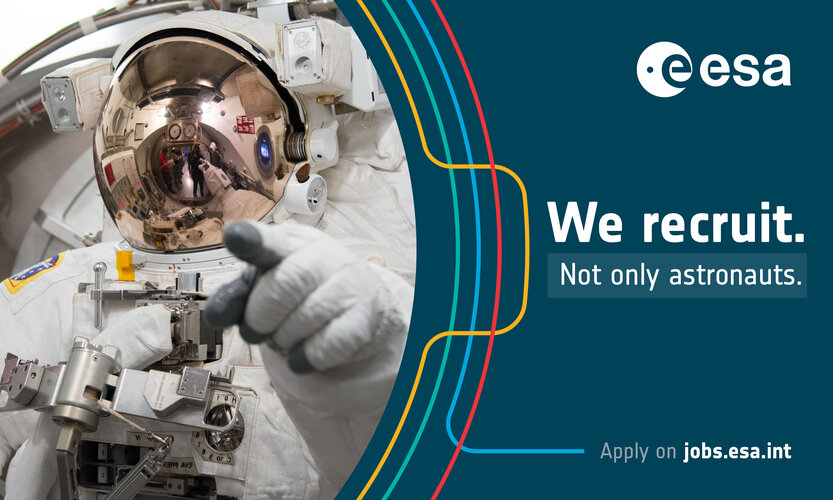
In March, we announced that 2023 would see the publication of over 300 vacancies at ESA. New vacancies keep being published as we continue our search for talented and motivated professionals to join our teams across Europe and support our mission of the peaceful exploration of space for the benefit of everyone. Could ESA be the next step in your career? Read more to find out!
Martian treasure hunt in Iceland
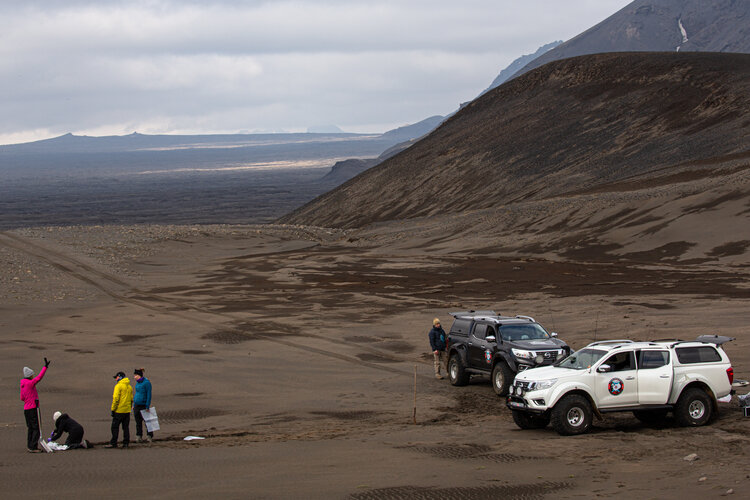 Image:
Image:
A team of martian scientists scouts the foothills of a volcano in Iceland hunting for a particular type of soil that matches samples collected by NASA’s Perseverance rover on the Red Planet.
The majestic landscape has a rusty colour from the dark, dense rock ejected during volcanic eruptions. The volcanic terrain, cool temperatures and sparse vegetation make the area very similar to ancient Mars. These conditions helped Iceland become the first European stopover for a treasure hunt that is searching for Mars-like samples around the world.
The effort is part of the joint Mars Sample Return
OceanMind selects Spire Global's satellite ship-tracking data to combat illegal fishing
 Spire Global, Inc. (NYSE: SPIR) ("Spire" or "the Company"), a global provider of space-based data, analytics and space services, was selected by OceanMind, a leader in marine enforcement and compliance, to extend its agreement in providing real-time automatic identification system (AIS) vessel-tracking data. Spire has been providing AIS data to OceanMind since 2019.
OceanMind supports fish
Spire Global, Inc. (NYSE: SPIR) ("Spire" or "the Company"), a global provider of space-based data, analytics and space services, was selected by OceanMind, a leader in marine enforcement and compliance, to extend its agreement in providing real-time automatic identification system (AIS) vessel-tracking data. Spire has been providing AIS data to OceanMind since 2019.
OceanMind supports fish High-resolution Ice Radar System Contributes to China's Antarctic Expedition
 During the latest Chinese Antarctica Research Expedition (CHINARE 39) which wrapped up in April, 2023, a high-resolution shallow ice radar system developed by the Aerospace Information Research Institute (AIR) with the Chinese Academy of Sciences (CAS) was applied to measure the ice sheet surrounding Zhongshan Station, where an airport on the ice is planned.
The obtained data demonstrate c
During the latest Chinese Antarctica Research Expedition (CHINARE 39) which wrapped up in April, 2023, a high-resolution shallow ice radar system developed by the Aerospace Information Research Institute (AIR) with the Chinese Academy of Sciences (CAS) was applied to measure the ice sheet surrounding Zhongshan Station, where an airport on the ice is planned.
The obtained data demonstrate c Arctic Weather Satellite progressing towards launch
 The European Space Agency's (ESA) Arctic Weather Satellite has passed its Critical Design Review, a key step to start the manufacturing of the satellite ahead of planned launch in 2024. AAC Clyde Space supplies the mission's main instrument, as well as core avionics, under contracts valued at a total of 13.5 MEUR (approx. 160 MSEK).
AAC Clyde Space has developed a passive microwave radiome
The European Space Agency's (ESA) Arctic Weather Satellite has passed its Critical Design Review, a key step to start the manufacturing of the satellite ahead of planned launch in 2024. AAC Clyde Space supplies the mission's main instrument, as well as core avionics, under contracts valued at a total of 13.5 MEUR (approx. 160 MSEK).
AAC Clyde Space has developed a passive microwave radiome 
 Image:
Moon stance
Image:
Moon stance 








